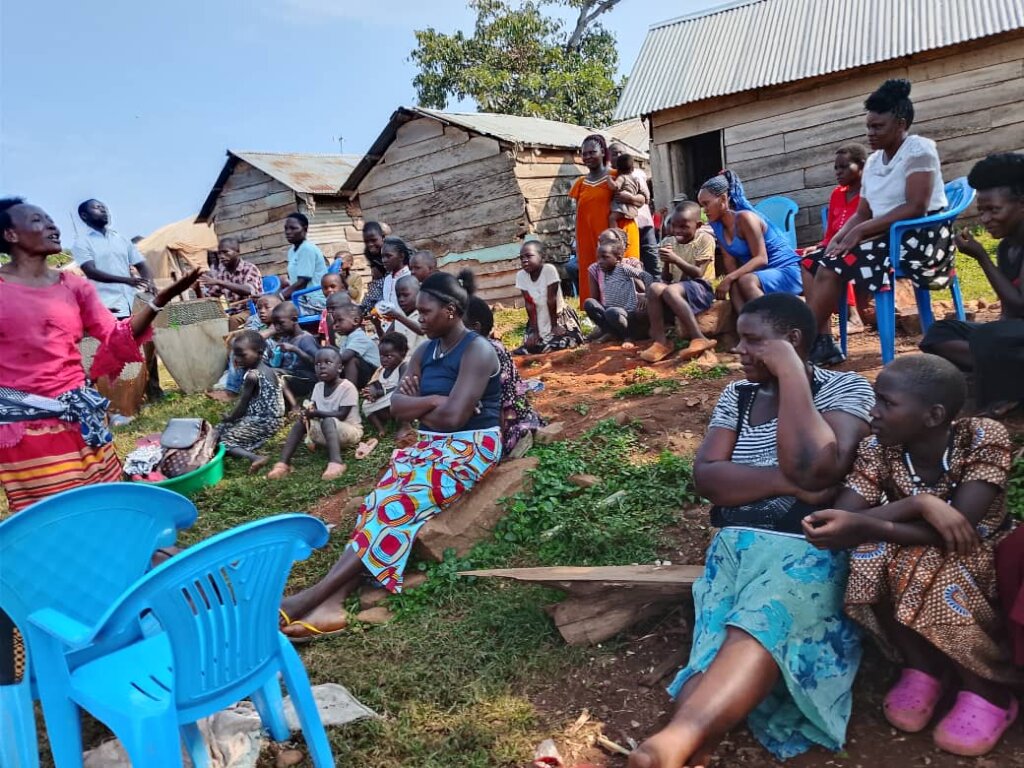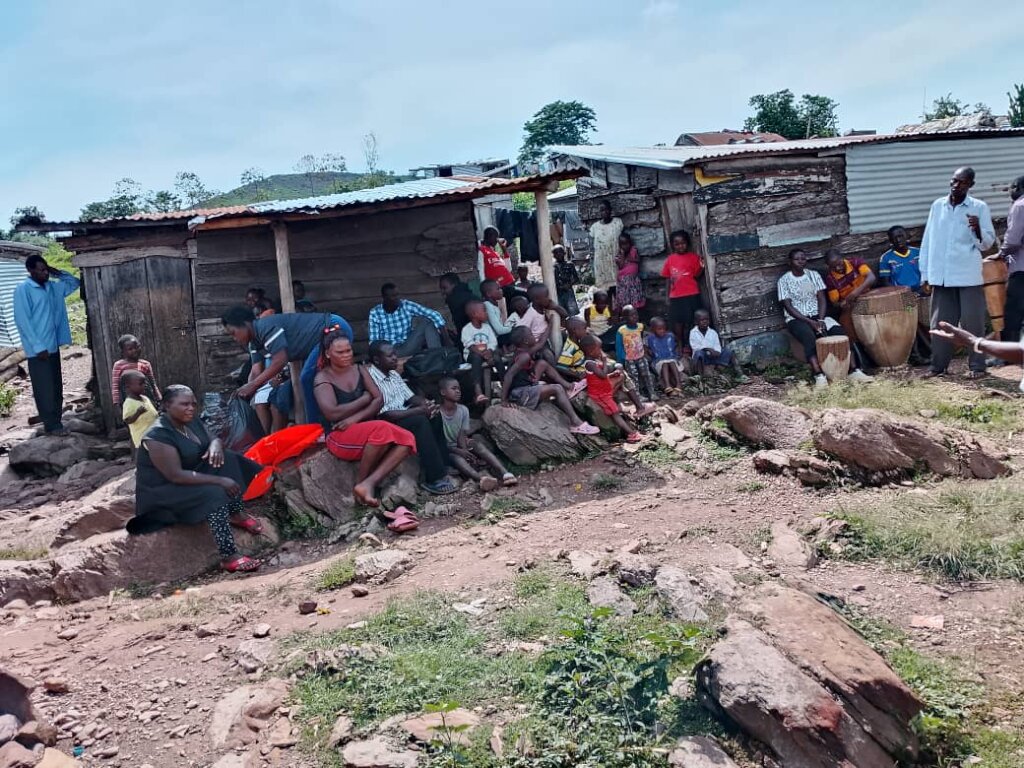Project Report
| Dec 27, 2024
YOUNG MEN, BOYS AND AGYW IN HIV PREVENTION
![]()
Summary:
The existence of one health facility in Lwajje subcounty (Lwajje Health Center III) to serve 8 isolated islands in Buvuma district. The negative modes of behavior for young women (FSW) that expose Buvuma islanders to risks of the life such as HIV/AIDS infection and its shattering effects on human development. In Buvuma islands, HIV is transmitted most often through heterosexual intercourse, Female Sex Workers (FSW) and AGYW aged 10 to 24 are three times more likely to be infected than their male counterparts because they lack knowledge about their bodies and do not have access to basic health services, they are particularly vulnerable. This activity is addressing the negative form of behavior and inadequate knowledge about HIV prevention hence this intervention increases HIV/AIDS awareness and practice of alternative behaviors in the prevention of HIV transmission resulting into behavior change through use of community sensitization and mobilization using music, dance and drama, provision of information, Education and Communication (IEC) to AGYW, fisherfolks and Female Sex Workers (FSW) in bar hotspots communities to ensure their participation, contribution and involvement in prevention of HIV/AIDs through change of knowledge, attitudes and practices.
The problem the activity is addressing:
Given that the population in Buvuma is a fishing community, available data (UBOS 2014) indicates that HIV prevalence in Buvuma islands is as high as 11.5% and is above the national prevalence of 5.5%. According to the Uganda Population HIV Impact Assessment (UPHIA 2020), Uganda’s current national HIV Prevalence is 5.5% among adults aged 15 to 49 years. The prevalence is higher among women at 7.1% compared to men at 3.8%. Additionally, according to (Uganda Bureau of Statistics 2024: The National Population and Housing Census 2024 – Preliminary Report, Kampala, Uganda), Buvuma district has a population of 61,702 Males and 57,274 Females (Total 118,976) with 52 isolated islands where HIV transmission is mainly through sexual intercourse and Mother to child transmission (MTCT).
The achievement and action taken:
- Raised awareness through music, dance and drama sessions and it’s a platform for accurate information sharing about myths and misconceptions about HV prevention methods.
- Supported behavior-change through providing the individuals with knowledge, skills to adopt healthy behaviors e.g condoms use, getting tested for HIV and seeking medical treatment.
- This activity enhanced collaboration with the vulnerable populations in addressing HIV/AIDS, partnerships with the members of the community and ensuring coordinated response to HIV prevention efforts.
- ACYDI made distribution of over 1500 male and 500 female condoms. It is important because it made people at most risk populations in Buvuma islands understand the importance of the use of a condom and hopefully will change their attitude and the opportunity to live healthier longer lives, free from HIV, other sexually transmitted infections, and unwanted pregnancy. When women are healthy and can choose how many children to have, they become vital members of their community - they finish school, start businesses, care for their families, and contribute to a more peaceful, prosperous economy.
How the problem is addressed:
- Counsellors encouraged PLHIV to disclose their HIV status to their significant others.
- Discordant couples (women) reported that HIV sero-status disclosure offered them the basis to seek permission from their husbands to leave home and seek HIV care. Additionally, disclosure empowered these women to ask for transport fares from their spouses, the PLHIV who had disclosed their HIV status were reminded, encouraged, and supported to keep clinic appointments and adhere to treatment.
- Educating the patients, the threats in missing appointments hence improvement in knowledge, attitude and behavior change.
- Encouraged to use condoms since it’s both the birth control and HIV prevention method.
- Improvement in knowledge, attitude and behavior change.
- The condoms distributed will prevent the clients from spreading the disease and further HIV/STI infections.
- Psychosocial support and counselling will help the affected AGYW and person living with HIV to cope from the stigma and improve on behavioral change.
- Psychosocial support motivated them to seek HIV care
- The VHTs and Health workers counseled bar workers, fisherfolks, and FSW trained them in behavior Change aimed at reinforcing positive and safe health behavior.
Challenges encountered during implementation:
- Insufficient laptops for report writing and submission.
- PLHIV did not want pictures to be taken for the purposes of confidentiality.
- Some AGYW and women PLHIV reported that they had not sought HIV care because their partners refused to allow them to go, threatening violence if they went without their consent/approval
- Lack of health education
- Lack of confidentiality
- Inadequate training of health workers in breaking bad news e.g. educating and supporting patients in delivery of test results.
- Inadequate resources and laboratory services
- Lack of appropriate health provider’s/health facilities in Lwajje islands
- Distance and unreliable water transport system to the health facilities.
- Depression, stigma, anxiety and shame of the clients
- Lack of social support
- Unavailability of female condoms from the health facilities.
- Factors related to treatment burden like side effects
- Lack of end of the month meeting of the people living with HIV/AIDS
Recommendations for performance improvement:
- Recommend use of promotional IEX materials such as branded organizational banners, Branded T-Shirts, branded materials etc.
- Peer education and outreaches are encouraged so that community members are trained as peer educators in providing HIV prevention information and support to their peers.
- Promote use of media and communication campaigns e.g radio and social media to disseminate messages and promote behavior change.
- Engaging cultural, religious leaders and faith leaders to promote HIV prevention and support through recognizing the importance of cultural and spiritual values in shaping community responses to HIV/AIDs.
- Provision of sufficient condoms to the health facilities prior to the project implementation.
- Purchase of Tablet/Digital cameras for capturing photos and videos while in the field.
- Purchase of laptops for report writing and submission.
- Use of IEC materials to disseminate HIV prevention messages such as branded banners, branded T-shirts etc
- PLHIV to sign consent forms for photo template.
- Training the health workers, the principles of counseling and confidentiality
- Post-HIV diagnosis follow-up counselling to address some of the barriers of linkage to HIV care.
- Provide capacity building health education to the health workers.
- Training health workers in breaking bad news e.g. how to educate and support AGYW, FSW, and patients in adherence and delivery of test results.
- Review adherence and treatment for unstable patients on treatment.
- All persons living with HIV and newly identified should be followed-up.
- It is necessary to establish condom joints hotspots at places such as drinking spots, barbering shops, cinema parlors, mechanic shops, and hair dressing saloons.
- To achieve the general focus of bringing the HIV epidemic under control, ACYDI will use its short female condom videos to incite target beneficiaries using peer educators and smart phones.
- Timely procurement of female condoms by the health facilities.
- Send out short messages to beneficiaries who access condoms at the hotspots.
- The use of HIV/AIDS promotional printed materials will incite informative and educational conversation (IEC materials)
- Social media such as Facebook, WhatsApp, twitter, Instagram and YouTube will be used as a medium of playing recorded videos in support of stigma-sensitive and anti-condom usage behavior change.
![]()
![Share on Twitter]()
![Share on Facebook]()

